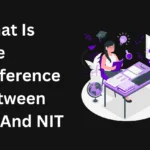Rate My Professor (RMP) is arguably gaining more sway in the realm of today’s academically inclined students. Many high school students or their guardians will take the time to access this highly visited website, thoroughly scrutinizing the reputations and ratings of the teachers in the prospective schools prior to admission, if ever such data were not readily available. Let me give an example: some good RMP critiques are any number of artistic entries by Insane Rating or an acceptable note explaining “Sorry, not happening,” and they can be read in such a way that the RMP entry can be appealing or not! So go ahead and read about them.
What Is Rate My Professor?
The platform, which is effectively supported, is a RMP site that allows students to evaluate their teachers anonymously for various attributes, like teaching quality, clarity, help or hindrance, and perhaps even difficulty in a subject. Students can also express their feelings and interpretations in detailed comments about the way a professor teaches.
Key Features of Rate My Professors
- Student Rating and Comments section: Grades assigned for teaching, clarity, and engagement.
- Chili Pepper System: With the controversial ratings of other features of professors computing “hotness” in earlier models, the function is gone now.
- Anonymous Satisfaction: Comments may be made without revealing the speaker’s actual identity.
- Institution Search: One can search for professors based on differences in institutions such as the listing of Colgate Rate My Professor.
How to Use Rate My Professor Effectively
Searching for Professors
- Use the search bar to enter the professor’s name or institution.
- Check multiple reviews to get a well-rounded perspective.
- Look for detailed comments rather than just relying on numerical ratings.
Interpreting Ratings
- High ratings (4.5-5.0): These professors are generally well-liked and effective.
- Mid-range ratings (3.0-4.4): Teaching effectiveness may vary; read reviews carefully.
- Low ratings (below 3.0): Indicates potential issues, but context is key—sometimes tough graders receive low ratings unfairly.
Red Flags to Watch For
- Overly positive or negative reviews: Extreme ratings might be biased.
- Lack of reviews: A professor with few reviews may not have a large enough sample for accuracy.
- Vague feedback: Reviews without specifics might not be reliable.
Is Rate My Professor Reliable?
While Rate My Professor is a useful tool, it has its limitations:
- Bias in Reviews: Students who had strong positive or negative experiences are more likely to leave reviews.
- Lack of Verification: Professors can’t verify reviews, and false ratings can exist.
- Small Sample Size: Some professors may have only a handful of reviews, making the ratings less reliable.
To get a more accurate picture, students should combine Rate My Professor data with:
- Official university evaluations
- Word-of-mouth from classmates
- Syllabus and course materials
Rate My Professor in India: Is It Popular?
Does Rate My Professor Work in India?
Unlike in the U.S., Rate My Professor India is not widely used. Indian universities often rely on internal student feedback mechanisms instead of third-party rating platforms. However, similar platforms are emerging, allowing Indian students to review their professors.
Alternatives for Indian Students
If you’re looking for reviews on Rate My Professor India, consider these alternatives:
- Shiksha.com – Provides college and faculty reviews in India.
- Collegedunia – Offers insights into university faculty and courses.
- Quora & Reddit – Students often discuss professors and university experiences here.
Case Study: Colgate Rate My Professor
Why Are Students Searching for Colgate Rate My Professor?
Colgate University, a prestigious liberal arts college, has its professors frequently rated on RMP. Students searching for Colgate Rate My Professor likely want:
- Insights on teaching styles and grading policies.
- Course difficulty levels and workload expectations.
- Student opinions on specific professors.
Examples of Highly Rated Professors at Colgate
- Professor A (4.8/5.0) – Known for engaging lectures and fair grading.
- Professor B (3.9/5.0) – Tough but respected for in-depth subject knowledge.
- Professor C (2.5/5.0) – Mixed reviews; students say the grading is inconsistent.
If you’re a Colgate student, always cross-check reviews with university resources.
Best Alternatives to Rate My Professor
Since Rate My Professor has its limitations, students can use alternative platforms to gather more insights:
Top Alternatives
- Koofers – Provides professor and course reviews along with study materials.
- Uloop – College news and professor ratings.
- UniADVICE – Focuses on university courses and faculty reviews.
- Student Room (UK-based) – Ideal for international students seeking university insights.
Offline Methods
- Attend open houses and orientation programs to get first-hand professor insights.
- Join student groups and forums to ask for recommendations.
- Look for LinkedIn profiles of professors to assess their academic background.
Conclusion
Rate My Professor is a valuable tool for students, but it should not be the only factor in choosing courses or professors. Whether you’re exploring Rate My Professor India, seeking Colgate Rate My Professor reviews, or looking for alternative platforms, always verify information from multiple sources before making academic decisions.
By combining online ratings with peer feedback, official evaluations, and personal interactions, students can make the best choices for their education.











